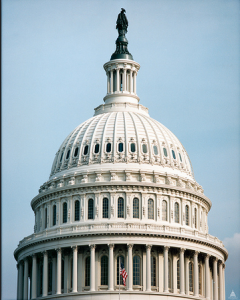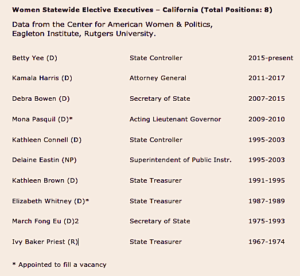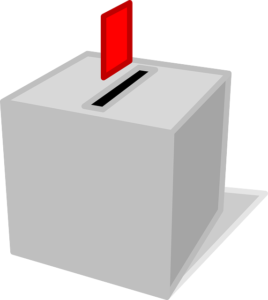 Susannah Delano, Executive Director at Close the Gap CA, had a good week – and it’s all because of the primary election results on June 5.
Susannah Delano, Executive Director at Close the Gap CA, had a good week – and it’s all because of the primary election results on June 5.
Her organization works to achieve gender parity in California’s State Legislature by recruiting progressive women to run for open seats, where no incumbent is running, or in purple districts, where most voters aren’t decisively red (Republican) or blue (Democratic).
Close the Gap CA targeted nine winnable districts in the primary with the goal of ensuring “at least one progressive woman was prepared to compete” in the general election.
And compete they did, with wins in eight of the nine districts:
Senate: Anna Caballero (SD 12); Melissa Hurtado (SD 14); Susan Rubio (SD 22); and Maria Elena Durazo (SD 24). Take note – all of these winning candidates are Latinas!
Assembly: Buffy Wicks (AD 15); Rebecca Bauer-Kahan (AD 16); Luz Rivas (AD 39); Tasha Boerner-Horvath (AD 76); and Elizabeth Warren (also in AD 76).
In AD 15, where Buffy Wicks was the top voter-getter, the results aren’t yet finalized: Candidate Jovanka Beckles is in a close 3rd place behind Dan Kalb. If the final vote count moves Beckles into 2nd place, the general election in AD 15 would then be another electoral contest with two progressive women, like AD 76.
As of next week, there will be:
· 10 women in the 40-member State Senate (6 Dems, 4 Reps);
· 20 women in the 80-member State Assembly (17 Dems, 3 Reps);
· 3 women of color in the State Senate (2 Asian Americans, 1 African American);
· 15 women of color in the Assembly (12 Latinas, 3 African Americans); and
· 2 LGBTQ women in the State Senate and 2 in the Assembly.
From this starting point of 23 Democratic women in both houses, Delano expects the number of Democratic women in the State Legislature to tick upwards after the general election in November, approaching 30.
“It’s already clear that 2018 has been an extraordinary year for women candidates,” said Delano. “Close the Gap CA will keep preparing women to run,” she added, “but lasting change depends on whether or not voters will continue to elect them.”
 If you think that machine politics undermine the democratic process, check out my latest op-ed, published in CalMatters: Machine politics on display in race for state Senate seat.
If you think that machine politics undermine the democratic process, check out my latest op-ed, published in CalMatters: Machine politics on display in race for state Senate seat.



